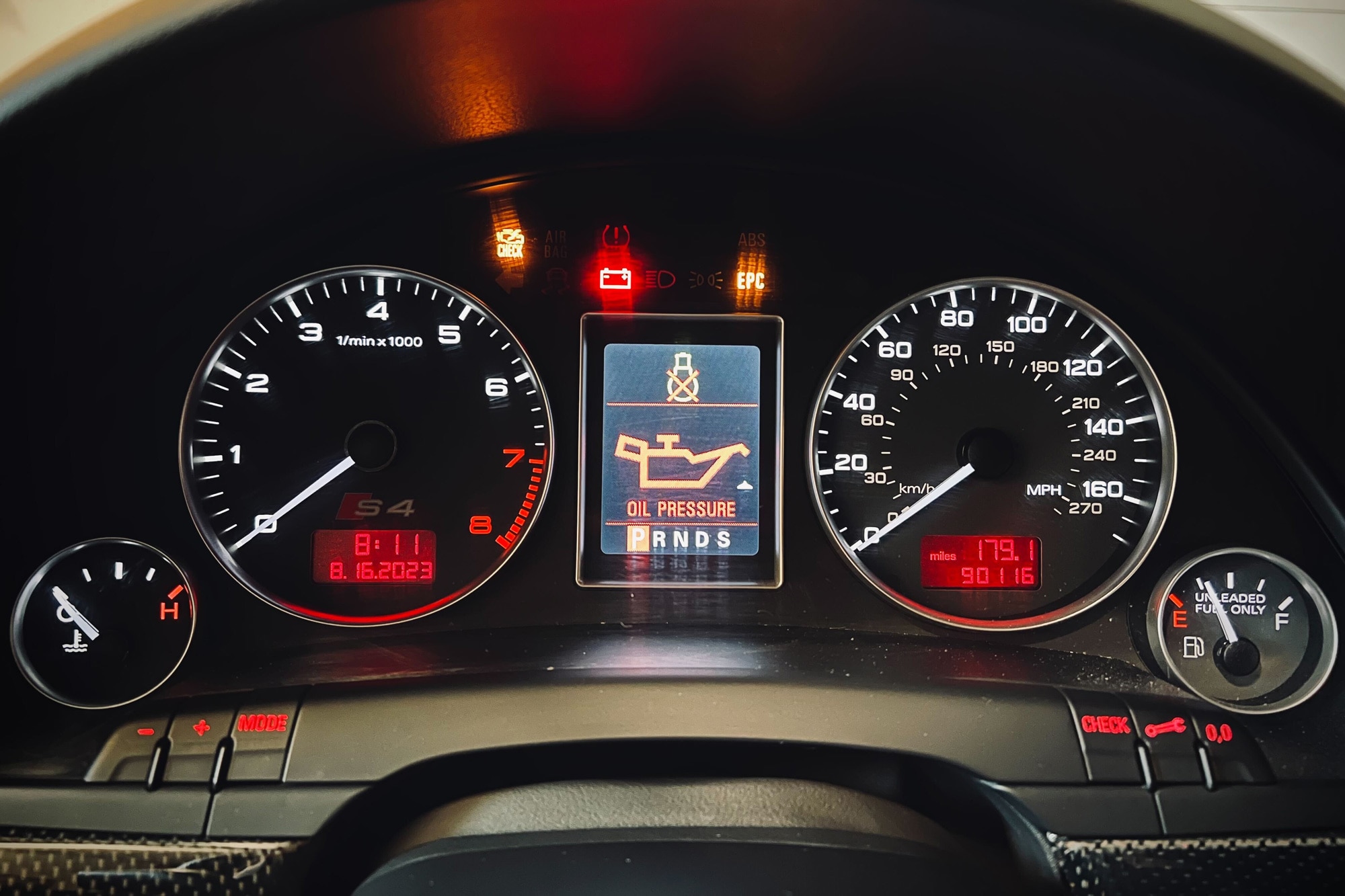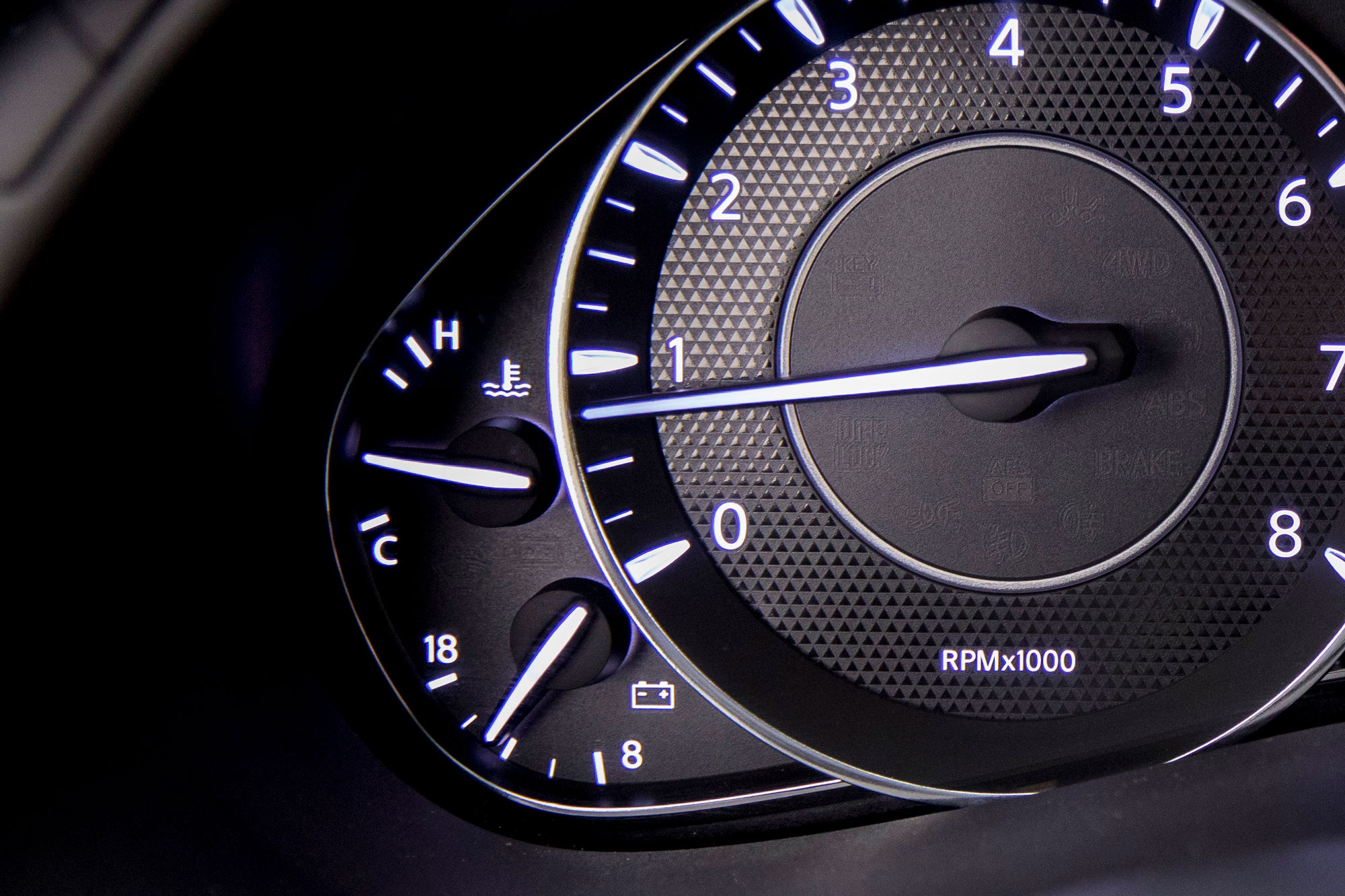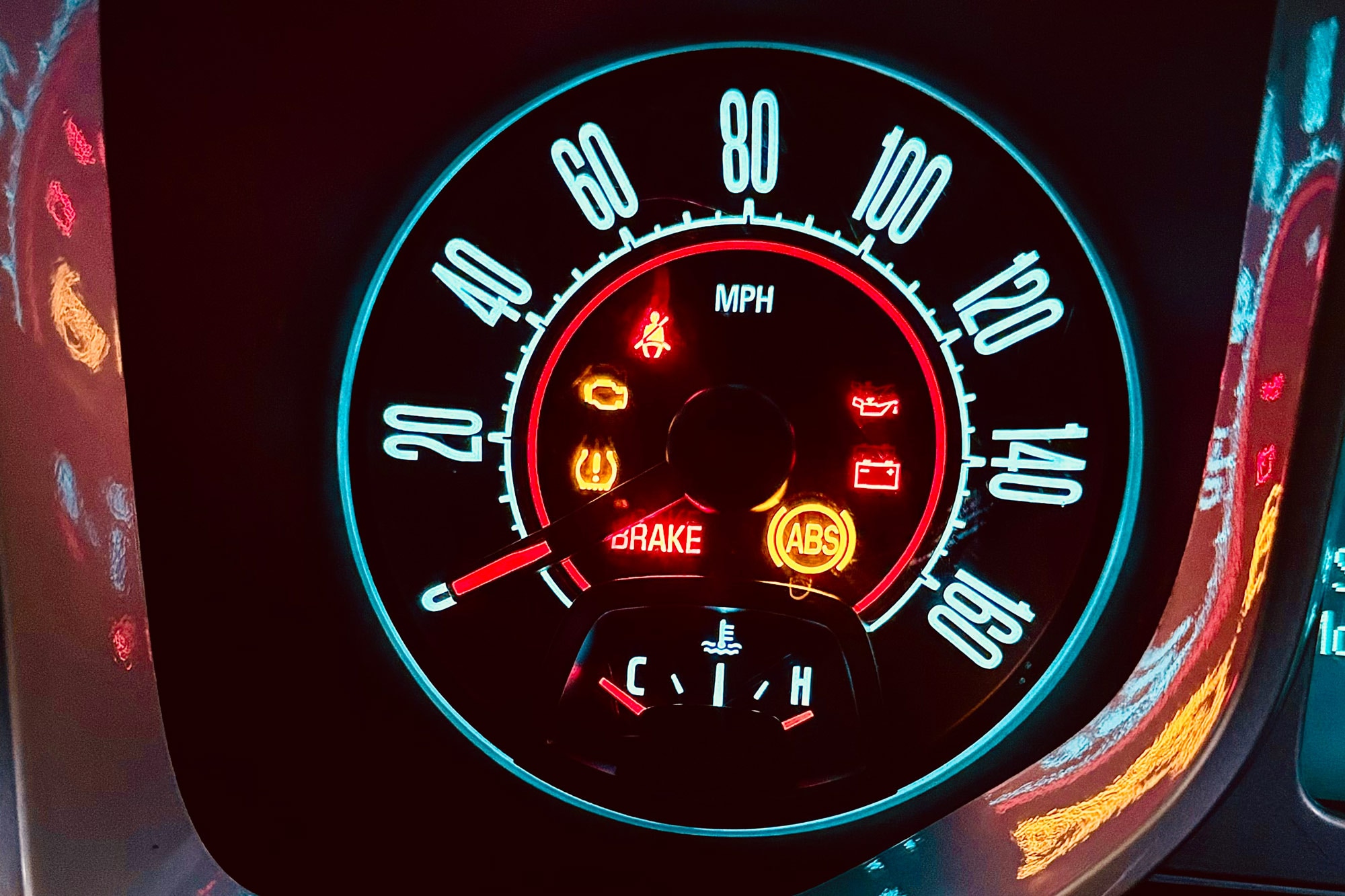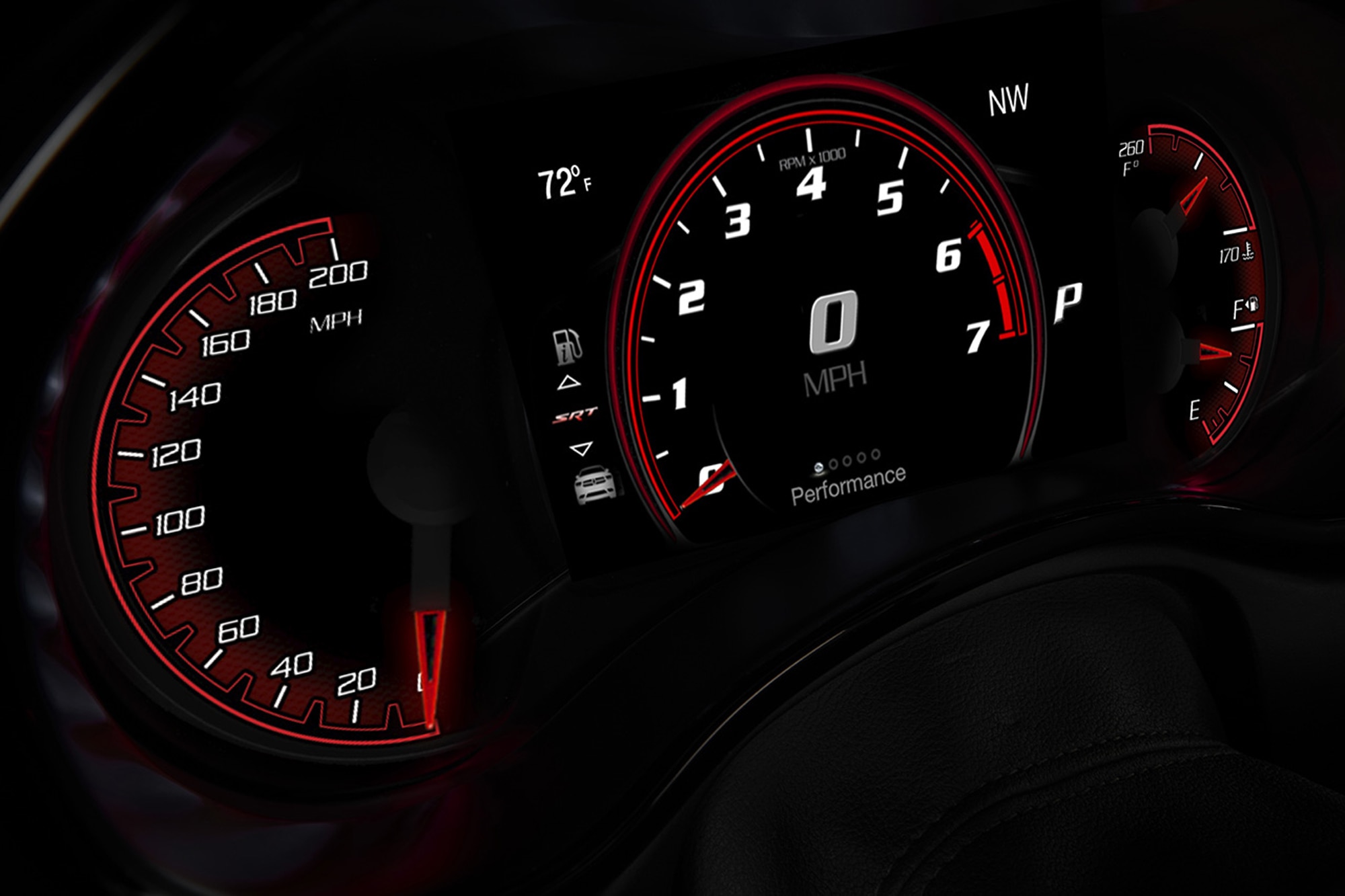A Guide to Automotive Gauges
Beyond the speedometer and fuel gauge, here's what to keep an eye on.
 Manuel Carrillo III | Capital One
Manuel Carrillo III | Capital One
QuickTakes:
| |
In everyday driving, the only gauges you might regularly glance at are the speedometer and the fuel gauge. If you've ever been curious about what the little genie's lamp is for or how you can use a trip odometer, read on.
 Ford
Ford
Oil-Pressure Gauge
High-performance sports cars such as the Ford Mustang Shelby GT500 and Porsche 911 often have oil-pressure gauges that read the engine oil pressure in either psi or bars, a metric unit that equals roughly 14.5 psi. Your everyday commuter might only have an oil-pressure warning light that comes on when it detects a low oil level, which can severely damage the engine. Normal oil operating pressures vary by engine, but commonly range from 25 to 65 psi.
An oil-pressure light is different from the oil-maintenance light, which simply tells you when it's time to get an oil and filter change.
 Nissan
Nissan
Coolant-Temperature Gauge
Coolant is a glycol and water mixture that keeps your engine from dangerously overheating. The glycol, or antifreeze, keeps the fluid itself from freezing. Most modern cars use warning lights to tell you if your car has overheated, often with the symbol of a thermometer floating in a wave of coolant.
If your car has a temperature gauge, it's likely an indicator that points between H and C — hot and cold — or units of temperature. If you notice the coolant-temperature gauge start to creep up, pull over immediately and turn off the engine. Failing to do so could damage your engine.
 Kara Snow | Capital One
Kara Snow | Capital One
Battery Voltage
Nearly all gas-powered cars use lead-acid batteries to start and run accessories in the car. As with the coolant-temperature gauge, most modern cars have switched to a simple warning light if something goes wrong, usually a symbol of a battery.
Some vehicles have gauges with numerals to show battery voltage. If the light illuminates, it may be time to replace your battery. It could be damaged or just worn out.
 Nissan
Nissan
Trip Odometer
While the odometer records every mile your car travels, the trip odometer, typically located at the bottom of the gauge cluster, records the distance traveled from the moment you set it.
It's helpful to track fuel economy or simply to see how far you've traveled on a cross-country road trip. Some drivers keep track of trip mileage for business reasons.
 Dodge
Dodge
Tachometer
The tachometer, which is typically a big round dial on the left of the gauge cluster, tells you how fast the engine is turning. Each numeral interval is in revolutions per minute (rpm), by the thousand.
Some of the highest-revving sports cars' engines can reach close to 10,000 rpm, but most daily driving resides around 1,500 to 2,500 rpm. In a car with a manual transmission, the tachometer can help you seamlessly shift into the next gear if you can match the engine revolutions properly.
 Nissan
Nissan
Boost Gauge
Some engines use forced induction, whether it be turbocharging or supercharging, to increase the amount of air density going into the cylinders. A boost gauge measures the pressure of the compressed air, or boost, being added to the engine.
The gauge can be standard equipped, or professionally installed on high-performance or even economy cars, from Porsche to Nissan. These gauges are helpful for making sure your car isn't getting more boost than the engine can handle, which could severely damage it.



